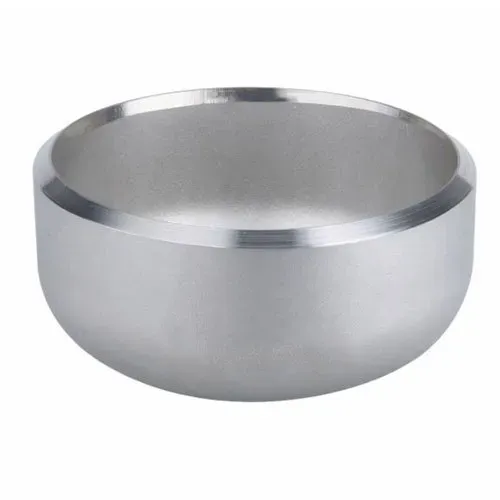-
Cangzhou Yulong Steel Co., Ltd.
-
Phone:
+86 13303177267 -
Email:
admin@ylsteelfittings.com
- English
- Arabic
- Italian
- Spanish
- Portuguese
- German
- kazakh
- Persian
- Greek
- French
- Russian
- Polish
- Thai
- Indonesian
- Vietnamese
- Zulu
- Korean
- Uzbek
- Hindi
- Serbian
- Malay
- Ukrainian
- Gujarati
- Haitian Creole
- hausa
- hawaiian
- Hebrew
- Miao
- Hungarian
- Icelandic
- igbo
- irish
- Japanese
- Javanese
- Kannada
- Khmer
- Rwandese
- Afrikaans
- Albanian
- Amharic
- Armenian
- Azerbaijani
- Basque
- Belarusian
- Bengali
- Bosnian
- Bulgarian
- Catalan
- Cebuano
- China
- China (Taiwan)
- Corsican
- Croatian
- Czech
- Danish
- Esperanto
- Estonian
- Finnish
- Frisian
- Galician
- Georgian
- Kurdish
- Kyrgyz
- Lao
- Latin
- Latvian
- Lithuanian
- Luxembourgish
- Macedonian
- Malgashi
- Malayalam
- Maltese
- Maori
- Marathi
- Mongolian
- Myanmar
- Nepali
- Norwegian
- Norwegian
- Occitan
- Pashto
- Dutch
- Punjabi
- Romanian
- Samoan
- Scottish Gaelic
- Sesotho
- Shona
- Sindhi
- Sinhala
- Slovak
- Slovenian
- Somali
- Sundanese
- Swahili
- Swedish
- Tagalog
- Tajik
- Tamil
- Tatar
- Telugu
- Turkish
- Turkmen
- Urdu
- Uighur
- Welsh
- Bantu
- Yiddish
- Yoruba

Dec . 16, 2024 23:15 Back to list
steel plate flange
Understanding Steel Plate Flanges An Overview
Steel plate flanges are vital components in various industries, facilitating the connection of pipes, valves, pumps, and other equipment. With their robust construction and versatile applications, they play a crucial role in ensuring system integrity and efficiency. This article delves into the characteristics, applications, and benefits of steel plate flanges, highlighting their importance in modern engineering.
What Are Steel Plate Flanges?
Flanges are mechanical components used to join different parts of a piping system. A steel plate flange is typically a flat disc or plate with bolt holes around its perimeter, designed to be fixed to another flange or mounting surface. These flanges can be manufactured in various sizes, thicknesses, and pressure ratings, depending on the project requirements. Common types include weld neck flanges, slip-on flanges, blind flanges, and threaded flanges, each serving distinct purposes and suitable for specific conditions.
Material Properties and Manufacturing
Steel plate flanges can be made from various types of steel, including carbon steel, stainless steel, and alloy steel. Each material offers unique properties that suit different environments. For instance, carbon steel flanges are widely used in low-pressure systems due to their good mechanical properties and affordability. In contrast, stainless steel flanges are preferred for corrosive environments, given their resistance to oxidation and corrosion.
The manufacturing process of steel plate flanges typically includes cutting, welding, and machining operations to achieve precise dimensions and surface finishes. Advanced techniques, such as CNC machining, ensure uniformity and high tolerances, ultimately guaranteeing the reliability of the flanges.
Applications of Steel Plate Flanges
Steel plate flanges find applications across various sectors, including
1. Oil and Gas In the oil and gas industry, steel plate flanges are employed in the construction of pipelines, ensuring secure and leak-proof connections under high pressure.
2. Water Treatment Flanges are often utilized in water treatment facilities for connecting different treatment units and pipelines, facilitating efficient water management.
steel plate flange

3. Chemical Processing The chemical industry relies on steel plate flanges to handle corrosive substances, with stainless steel flanges being a common choice for resilience against chemical attacks.
4. Power Generation In power plants, flanges are essential for connecting different components of steam, gas, or hydro systems, ensuring smooth operation and maintenance access.
5. Construction and Infrastructure Steel plate flanges are also used in building structures, particularly in support systems and heavy machinery installations.
Advantages of Steel Plate Flanges
Several benefits make steel plate flanges a preferred choice for many applications
- Strength and Durability Steel’s inherent strength provides the necessary support for heavy-duty applications, ensuring long-term performance and reliability.
- Versatility With varied designs and sizes, steel plate flanges can be tailored to meet specific project requirements, making them suitable for different industries.
- Cost-Effectiveness Compared to other materials, steel flanges often provide a balance of affordability and performance, making them an economical choice for large-scale applications.
- Ease of Installation and Maintenance The design of flanges allows for straightforward installation and disassembly, which facilitates easier maintenance and repairs, thus minimizing downtime.
Conclusion
In conclusion, steel plate flanges are indispensable components in numerous industrial applications, recognized for their strength, durability, and adaptability. Their ability to withstand high pressures and corrosive environments makes them critical in the successful operation of various systems, from oil and gas pipelines to water treatment facilities. As industries continue to evolve, the demand for reliable and effective joining solutions, such as steel plate flanges, will remain significant. Understanding the characteristics and applications of these flanges helps engineers and industry professionals make informed decisions, ultimately promoting efficiency and safety in their projects.
Latest news
-
ANSI 150P SS304 SO FLANGE
NewsFeb.14,2025
-
ASTM A333GR6 STEEL PIPE
NewsJan.20,2025
-
ANSI B16.5 WELDING NECK FLANGE
NewsJan.15,2026
-
ANSI B16.5 SLIP-ON FLANGE
NewsApr.19,2024
-
SABS 1123 FLANGE
NewsJan.15,2025
-
DIN86044 PLATE FLANGE
NewsApr.19,2024
-
DIN2527 BLIND FLANGE
NewsApr.12,2024
-
JIS B2311 Butt-Welding Fittings LR/SR 45°/90° /180°Seamless/Weld
NewsApr.23,2024











